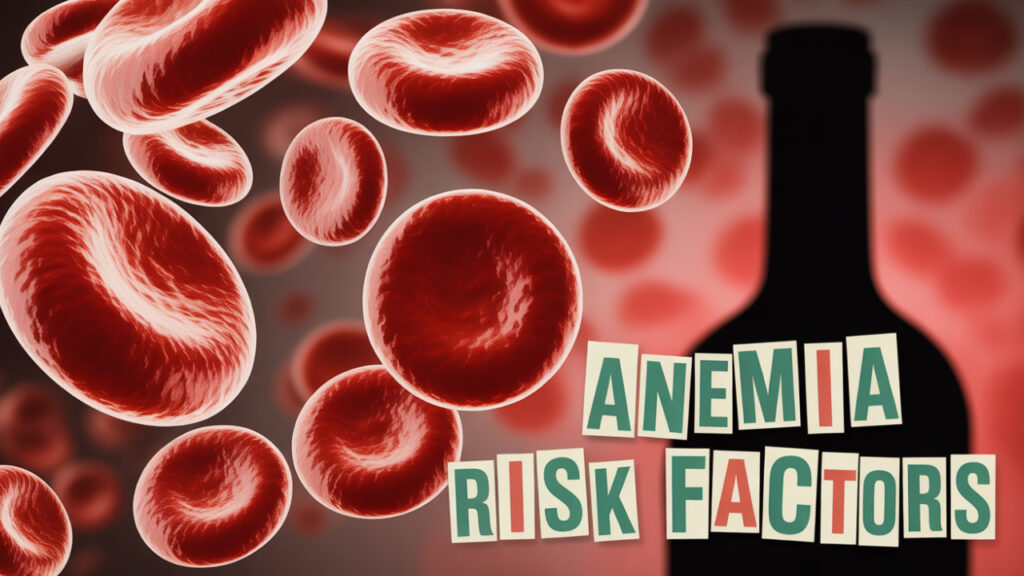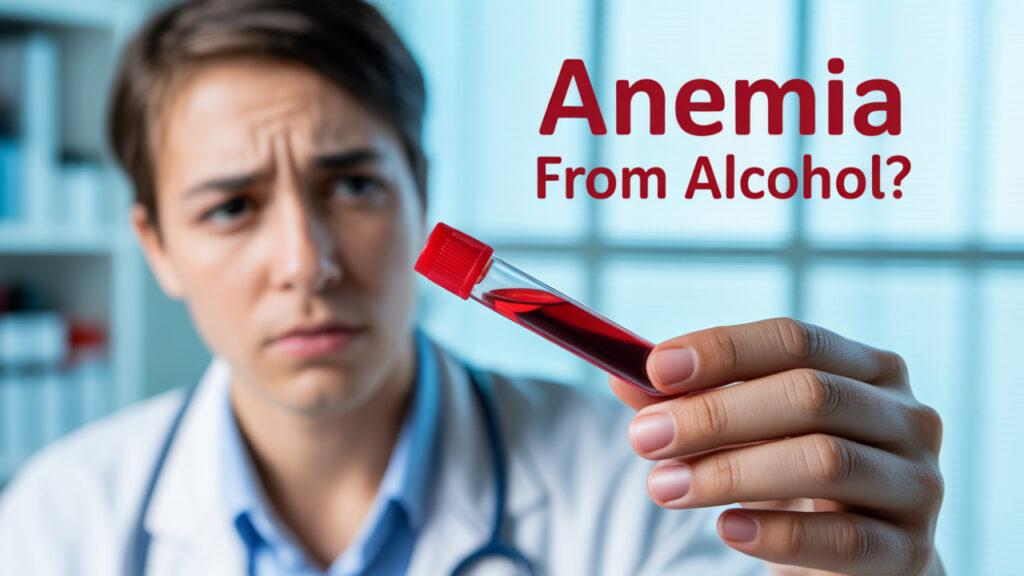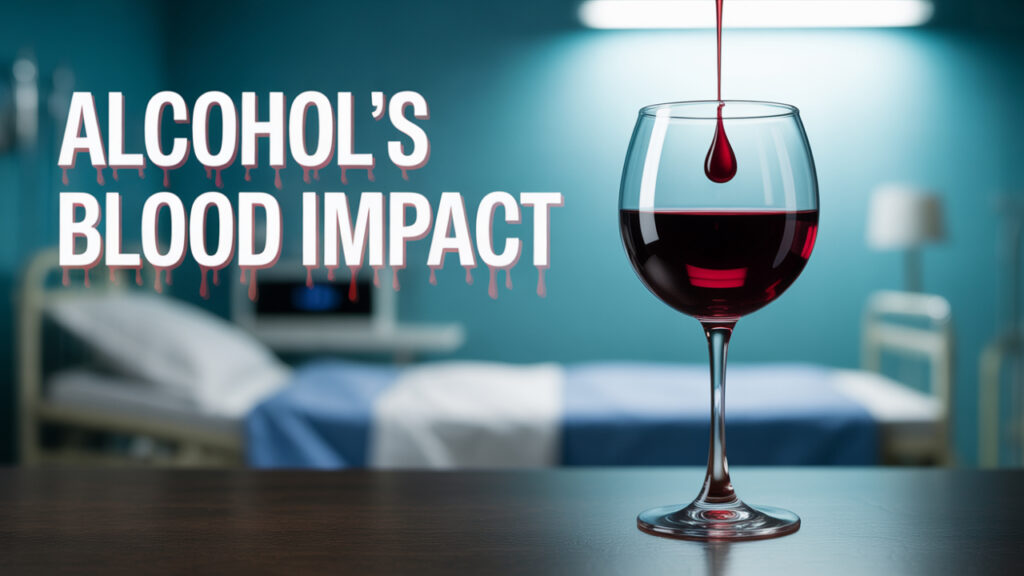
Can Alcohol Abuse Cause Anemia? Understanding Causes, Symptoms, and Treatment
Chronic alcohol consumption undermines your body’s capacity to generate healthy red blood cells, often leading to anemia and persistent fatigue. By exploring how alcohol disrupts nutrient absorption, suppresses bone marrow function, damages the liver, and triggers internal bleeding, you’ll understand why anemia develops in people with alcohol use disorder. This article covers:
- Core mechanisms linking alcohol abuse to anemia
- Types of anemia seen in heavy drinkers
- Recognizable symptoms and diagnostic steps
- Nutritional, medical, and addiction-focused treatments
- Strategies to prevent recurrence and sustain long-term blood health
- Professional help options at Beginnings Treatment Centers
How Does Alcohol Abuse Lead to Anemia?
Alcohol use disorder can directly cause anemia by interfering with blood cell production, nutrient uptake, and organ function, leading to reduced hemoglobin and fewer erythrocytes.
Below are the four principal pathways:
What Nutrient Deficiencies Does Alcohol Abuse Cause?

Alcohol impairs the absorption and metabolism of key hematopoietic nutrients, depriving bone marrow of the building blocks for red blood cells.
| Nutrient | Role in Red Blood Cell Formation | Impact of Alcohol Abuse |
|---|---|---|
| Folate | DNA synthesis in erythrocyte precursors | Malabsorption in the intestine leads to megaloblastic anemia |
| Vitamin B12 | Maturation of red blood cells | Pancreatic insufficiency and mucosal injury reduce uptake |
| Iron | Hemoglobin synthesis | Chronic GI blood loss and mucosal damage diminish stores |
By disrupting folate, B12 and iron pathways, alcohol creates a cascade of nutrient deficits that compromise erythropoiesis and set the stage for anemia.
Nutrient Deficiencies and Anemia
Alcohol abuse significantly impairs the absorption and metabolism of essential nutrients like folate, vitamin B12, and iron, which are crucial for red blood cell formation. These deficiencies can lead to various types of anemia, including macrocytic and iron-deficiency anemia, due to the disruption of erythropoiesis.
This research supports the article’s claims about the direct link between alcohol-induced nutrient deficiencies and the development of different types of anemia.
How Does Alcohol Directly Suppress Bone Marrow Function?
Alcohol and its metabolites exert toxic effects on bone marrow stem cells, reducing erythroid progenitor proliferation and differentiation. Stem cell injury leads to fewer mature red blood cells circulating, which directly lowers hemoglobin levels and oxygen delivery. Understanding marrow suppression highlights why abstinence and medical detox are critical for restoring healthy blood cell production.
What Role Does Liver Damage Play in Alcohol-Induced Anemia?
The liver synthesizes proteins essential for iron transport, clotting factors, and nutrient storage. Alcohol-related liver injury—ranging from steatosis to cirrhosis—impairs these functions and increases portal hypertension, which can cause hypersplenism and red blood cell sequestration. Damage to hepatic iron regulation further exacerbates anemia through altered hepcidin levels and chronic inflammation.
Impact of Liver Damage
Alcohol-related liver damage, ranging from steatosis to cirrhosis, impairs the liver’s ability to synthesize proteins essential for iron transport and clotting factors. This damage can exacerbate anemia through altered hepcidin levels and chronic inflammation, further disrupting red blood cell production and function.
This citation reinforces the article’s discussion on how liver damage, caused by alcohol abuse, contributes to the development and worsening of anemia.
How Does Gastrointestinal Bleeding from Alcohol Abuse Contribute to Anemia?
Frequent vomiting, gastric mucosal erosion, and esophageal varices in heavy drinkers lead to slow, chronic blood loss throughout the digestive tract. Ongoing iron depletion from gastrointestinal bleeding reduces ferritin stores, triggering iron deficiency anemia. Prompt endoscopic evaluation and bleeding control are essential to halt red blood cell loss and improve iron balance.
What Are the Different Types of Anemia Caused by Alcohol Abuse?
What Is Alcoholic Macrocytic Anemia and Its Causes?
Alcoholic macrocytic anemia is characterized by enlarged red blood cells (mean corpuscular volume >100 fL) due to folate and vitamin B12 deficiencies. Impaired DNA synthesis leads to megaloblastic changes in erythrocytes and bone marrow precursors, producing large, fragile red cells prone to hemolysis. This subtype often improves with nutrient supplementation and abstinence.
How Does Alcohol Cause Iron Deficiency Anemia?
Iron deficiency anemia arises when chronic GI bleeding and poor dietary intake exhaust iron stores, yielding microcytic, hypochromic red blood cells. Symptoms include extreme fatigue, pica, and restless leg syndrome. Oral or intravenous iron replacement, combined with bleeding source control, restores hemoglobin synthesis and alleviates symptoms over several weeks.
What Are Hemolytic and Sideroblastic Anemia in Alcohol Abuse?
While less common, hemolytic anemia can occur when alcohol‐induced oxidative stress damages red cell membranes, leading to premature destruction. Sideroblastic anemia emerges from dysfunctional iron incorporation into heme within mitochondria, often reversible with B6 supplementation and abstinence. Recognizing these variants ensures precise therapy and monitoring.
What Are the Common Symptoms and How Is Alcohol-Induced Anemia Diagnosed?
What Symptoms Indicate Alcohol-Related Anemia?
- Persistent fatigue and exercise intolerance
- Generalized weakness and dizziness
- Pale or sallow skin and mucous membranes
- Shortness of breath on mild exertion
- Cold intolerance and brittle nails
How Do Doctors Diagnose Anemia Caused by Alcohol Abuse?
Diagnosis begins with a complete blood count (CBC) revealing low hemoglobin, hematocrit, and altered red cell indices. Additional tests include serum folate, vitamin B12, ferritin, transferrin saturation, liver function panels, and peripheral blood smear. A detailed clinical history of alcohol intake helps distinguish alcoholic anemia from other hematological disorders.
How Can Alcohol-Induced Anemia Be Treated and Reversed?

Treatment and Recovery
Effective recovery from alcohol-induced anemia involves a combination of nutritional support and addiction treatment. Nutritional interventions, such as folate, vitamin B12, and iron supplementation, are essential to correct deficiencies and restore red blood cell production. Addressing alcohol dependence is crucial to eliminate the ongoing damage and allow the body to heal.
This citation supports the article’s emphasis on the importance of a comprehensive approach to treating alcohol-induced anemia, including both medical and addiction-focused interventions.
What Nutritional Supplements and Dietary Changes Help Treat Anemia?
Restoring red cell production requires:
- Folate (400–1,000 µg/day) to correct megaloblastic maturation
- Vitamin B12 (1,000 µg intramuscular weekly) for erythrocyte stability
- Iron (oral 65 mg elemental/day or IV) for hemoglobin synthesis
- Protein-rich, nutrient-dense meals including leafy greens, lean meats, and legumes
Why Is Treating Alcohol Abuse Essential for Anemia Recovery?
Addressing nutrient deficits alone cannot restore blood health if toxic alcohol exposure continues to impair absorption, marrow function, and liver integrity. Comprehensive addiction treatment eliminates the ongoing insult, allowing organ systems to repair, nutrient uptake to normalize, and red blood cell counts to recover sustainably.
How Does Beginning’s Treatment Center Address Alcohol-Induced Anemia?
Beginnings Treatment Centers combines medically supervised detoxification, residential care, dual-diagnosis counseling, and nutritional rehabilitation to support hematological recovery. Our evidence-based approach integrates liver monitoring, vitamin repletion protocols, and ongoing therapy—ensuring patients regain healthy blood counts while overcoming alcohol use disorder. Learn about our full continuum of care at Drug & Alcohol Treatment in Orange County – Beginnings.
How Can Recurrence of Alcohol-Related Anemia Be Prevented?
Why Is Sustained Sobriety Important for Preventing Anemia?
Maintaining abstinence eliminates the toxic effects of alcohol on nutrient absorption, bone marrow, and liver function. Without continued exposure, folate and B12 metabolism normalize, iron stores rebuild, and red blood cell production stabilizes—dramatically reducing the risk of anemia recurrence.
What Support and Aftercare Options Aid Long-Term Recovery?
- Structured outpatient counseling and relapse prevention groups
- Nutritional follow-up with registered dietitians
- Periodic blood testing to monitor hemoglobin and nutrient levels
- Peer support networks and family therapy
What Are Frequently Asked Questions About Alcohol Abuse and Anemia?
Can Alcohol-Induced Anemia Be Fully Reversed?
With complete abstinence and proper supplementation, most cases of alcoholic anemia—including macrocytic and sideroblastic types—resolve over 2 to 3 months as bone marrow function and nutrient stores recover.
Which Vitamins Are Most Affected by Alcohol Abuse?
Folate and vitamin B12 are most commonly depleted, but chronic drinking also impairs iron absorption and disrupts vitamin B6 and thiamine metabolism, requiring comprehensive nutritional rehabilitation.
How Soon Do Anemia Symptoms Improve After Quitting Alcohol?
Patients typically notice reduced fatigue and improved exercise tolerance within 4 to 6 weeks, with full normalization of blood counts by 2 to 3 months when nutritional therapy is in place.
Is Alcohol Abuse the Only Cause of Macrocytic Anemia?
While alcohol-related malabsorption is a leading cause, macrocytic anemia can also result from liver disease alone, hypothyroidism, medications, and bone marrow disorders—highlighting the need for thorough evaluation.
Where Can You Get Help for Alcohol Abuse and Related Anemia?
How to Contact Beginning’s Treatment Center for Admission?
For confidential assessment and immediate placement, call us or visit our website today. Our team is available 24/7 to guide you through admissions at Drug & Alcohol Treatment in Orange County – Beginnings.
What Treatment Programs Are Available for Alcohol Use Disorder?
Beginnings offers medically supervised detox, residential inpatient care, partial hospitalization, and intensive outpatient programs—each tailored to address co-occurring mental health conditions and nutritional rehabilitation.
How Does Medical Detox Support Anemia Recovery?
Medical detox stabilizes the patient medically and begins nutrient repletion from day one, preventing further marrow suppression and GI bleeding while alleviating withdrawal symptoms under clinical supervision.
Anemia from alcohol abuse represents a serious but reversible condition when nutrient deficits are corrected and alcohol dependence is treated. By understanding the underlying mechanisms, recognizing early symptoms, and engaging in a comprehensive recovery program, individuals can restore healthy blood function. If you or a loved one struggles with heavy drinking and related health issues, professional help is available—take the first step toward renewed vitality and sustained sobriety today.

